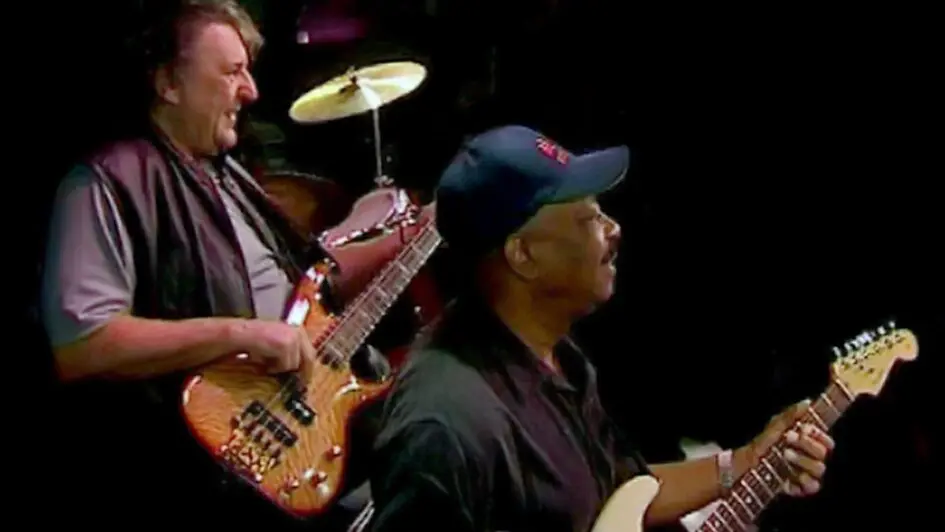Per Matt
As Labor Day honors and recognizes the contributions of laborers in the United States, I thought it would be a pretty good time to shine the spotlight on the hard-working studio musicians of Detroit who became the backbone of a record company and a movement, but you may not recognize their names. The Funk Brothers are no longer Standing in the Shadows of Motown, as they have finally received their long-overdue credit in this one-of-a-kind music documentary.
So much has happened behind the scenes with this group, it’s almost impossible to detail it all. Part behind-the-scenes documentary, part reunion concert, the Funk Brothers’ influence touched musicians all over the world.
Richard “Pistol” Allen (drums), Jack “Black Jack” Ashford (percussion), Bob Babbitt (bass), Benny “Papa Zita” Benjamin (drums), Eddie “Bongo” Brown (percussion), Johnny Griffith (keyboards), Joe Hunter (keyboards), James “Igor” Jamerson, Uriel Jones (drums), Joe Messina (guitar), Earl “Chunk of Funk” Van Dyke (keyboards), Robert White (guitar) and Eddie “Chank” Willis (guitar) backed up many incredibly influential musicians throughout the years. There’s too many to list, but Stevie Wonder, The Four Tops and Marvin Gaye were always hanging around the studio, so it’s safe to say they enjoyed performing together. These dayplayers often toured with the likes of the Temptations and Smokey Robinson.
“Motown was America’s introduction to soul music.”
Detroit’s unsung musical heroes drew from their jazz, blues, R&B and doo-wop influences. As performers, they listened and communicated with each other, but even better, they liked each other, which factored into their success. Individually, they ruled the Detroit night life bar scene and together, through a 14-year period from from 1959 to 1973, the band produced more hit songs than any other band around the world, earning the label as the “greatest hit machine in the history of pop music.”
So, what exactly is the Motown sound? These musicians gave hope to many throughout their music, creating deadly grooves that turned into hit records, earning non-stop plays on jukeboxes and radio stations everywhere. Even more interesting is to hear all about the spiritual jam sessions that molded them. And they were crafted quickly. Within a three-hour recording time limit, the group could perfect no fewer than two songs and up to four per session, as they always worked together, learning quickly how to build a creative environment.
The retelling of past tales is the best part, like when a group is all riding in a car together with a camera, remembering the good old days. Archive footage recounts the past and recreations bring these moments to life. But when Motown Records closed up shop and moved to California without any notice to its performers, there was a drastic change for everyone involved.
The film doesn’t really drag, but at one point it felt like its momentum was lost with the deaths of a couple of big-named performers, leading into the social unrest at the time, but closes as Chaka Khan and Montell Jordan bring down the house with “Ain’t No Mountain High Enough.”
Through it all, the Funk Brothers were incredible musicians who crafted some legendary music within a very short amount of time. It was nice to learn there were two Tennesseans of the bunch and it was great to hear many of them reunite and perform their special sound, albeit it with contemporary musicians.
Growing up, I was never really a fan of Motown’s psychedelic soul in the group’s later years, but watching this documentary is absolutely necessary for any fan of the music. Bootsy Collins was absolutely the flashiest of the reunion bunch and I was pleasantly surprised by the singer’s range. Growing up around Music City, it was nice to finally learn a little about those who inhabited Hitsville, U.S.A.
“Without them, there really wouldn’t be any Motown.”
